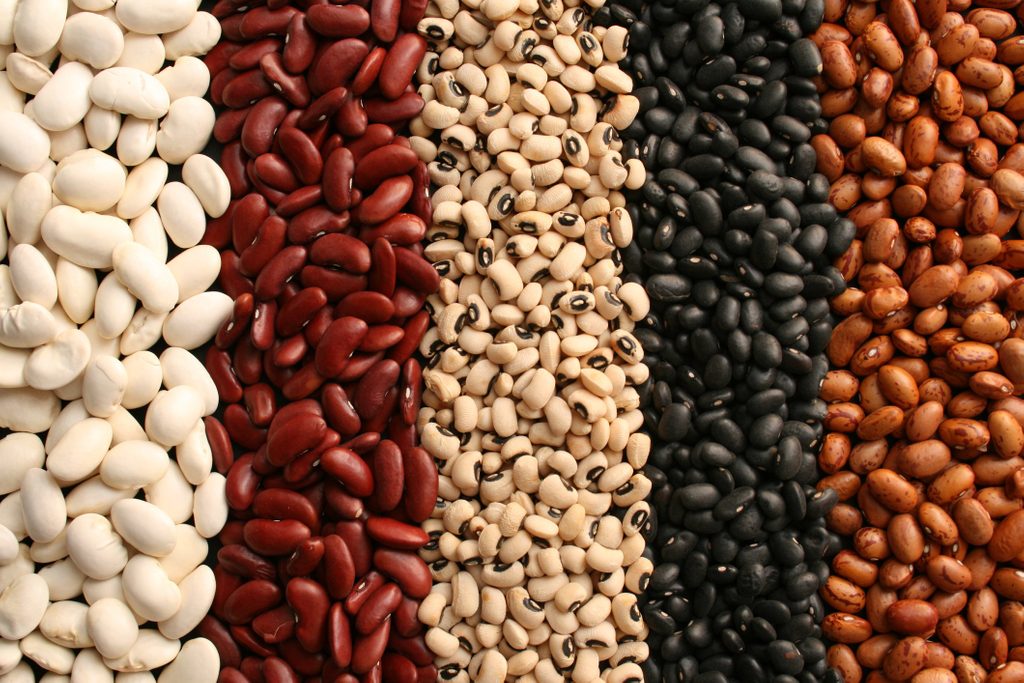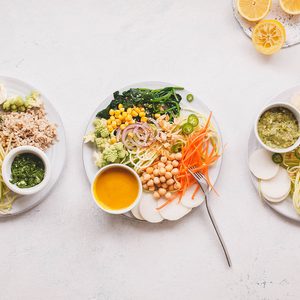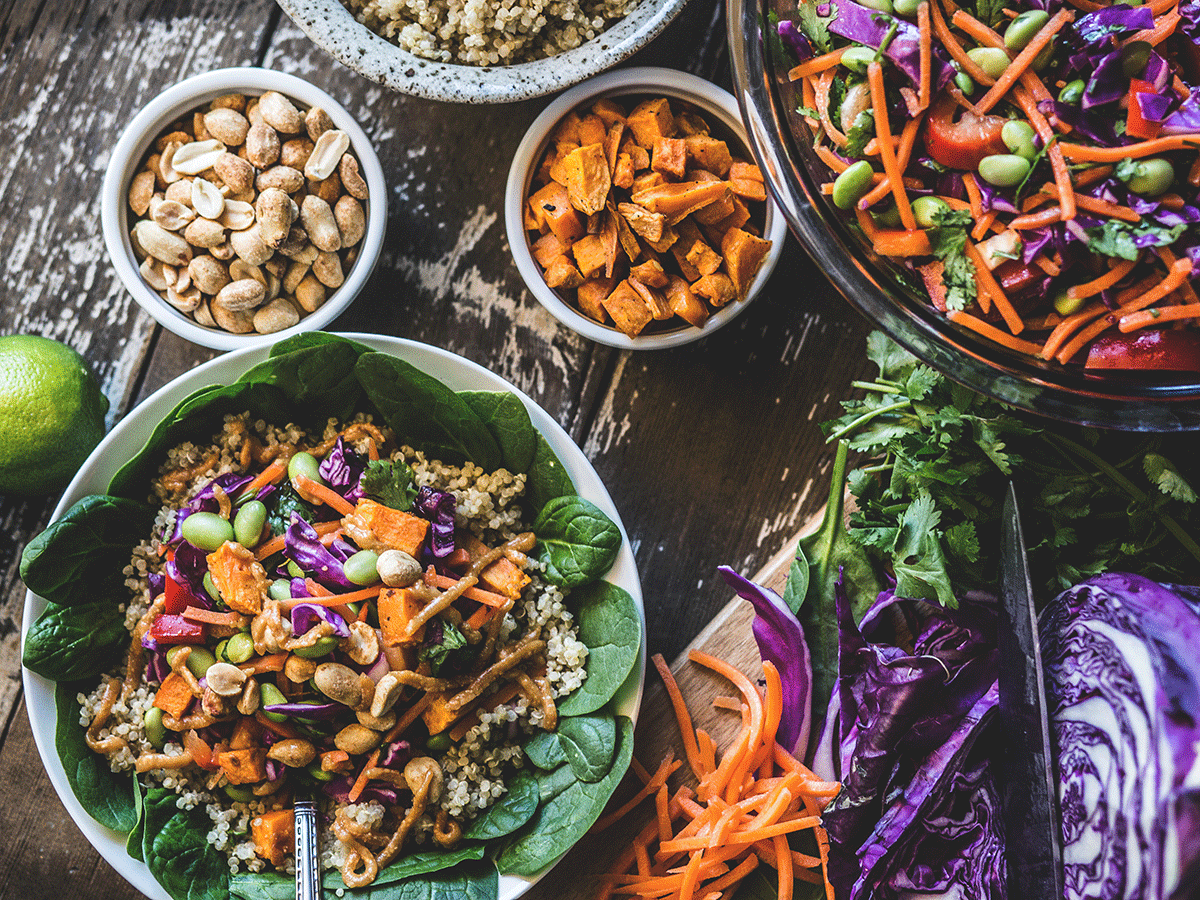6 Types of Beans to Meet Your Protein Needs

Registered dietitian Cynthia Sass shares the protein and nutrition content of six types of beans, and how to use them in place of meat.
Given the potential meat shortage, consumers may need to find alternate sources of protein. But even if meat is available in abundance, embracing more plant protein sources is a savvy health-protective strategy. For example, a 2019 study published in JAMA Internal Medicine found that eating more plant protein was tied to a lower risk of death from all causes during the study, but particularly from heart disease, the second leading cause of death for both men and women in Canada.
Beans are a plant-based protein you can use instead of meat
Of the readily accessible plant protein options, beans offer some pretty impressive benefits. They’re affordable, versatile, eco-friendly, and rich in fibre, as well as a wide variety of vitamins and minerals. Beans are also rich in polyphenols, an antioxidant tied to anti-inflammation, and disease protection, according to a 2017 study published in the International Journal of Molecular Sciences. And according to a study in the Journal of the American College of Nutrition, eating beans is associated with lower body weight, smaller waist measurements, and lower blood pressure.
How eating beans can increase fibre intake
The soluble fibre found in beans has been shown to help fend off belly fat. A study published in Obesity that tracked adults over a five-year period found that for each 10-gram increase in soluble fibre consumed, the rate of internal belly fat accumulation decreased by 3.7 precent. One cup of cooked black beans provides 5.6 grams of soluble fibre.
Adequate fibre is linked to healthy weight management, in addition to a reduced risk for heart disease, stroke, hypertension, certain gastrointestinal disorders, type 2 diabetes, and some cancers, according to a February 2020 study in Nutrients. Too little fibre may even interfere with sleep length and quality, suggests a 2016 study in the Journal of Sleep Medicine.
Do beans cause gas and bloating?
If you’re worried about gas and bloating, there’s less cause for concern than you may think. Researchers conclude what I see anecdotally with my clients—gassiness is less significant than anticipated, and your body adjusts as you eat beans more often. A study published in Nutrition Journal assessed issues like flatulence among 40 volunteers over eight weeks. One group added a half cup of canned carrots to their daily diet (a food not known to trigger gastrointestinal issues), and the second added a half cup of beans. In the first week, about 35 percent of the subjects who added beans reported an increase in flatulence; in other words, 65 percent did not. But by week two, those reports dropped to 19 percent, and continued to decline each week, to 11 percent in week four, and three percent by week eight. (If you’re suffering from painful or sudden excessive flatulence, here’s what to do about it.)
Cooking with canned beans
When it comes to preparing beans, there are a variety of options, including a few healthy short cuts. Canned beans are ready to eat after draining and rinsing. I recommend looking for no salt added canned beans that are BPA free, to avoid exposure to bisphenol A, a chemical used to coat metallic cans that may contribute to metabolic disorders, including type 2 diabetes and obesity. (Try these nutritious canned bean recipes.)
Some varieties of frozen, pre-cooked beans are also available, including black and garbanzo. They can be thawed in the refrigerator and eaten cold in salads and chilled side dishes, or added to recipes frozen, like soups and stir fries.
How to cook dry, bagged beans
Dry, bagged beans require soaking prior to cooking. According to USA Pulses, there are two soaking methods. For the traditional method, pour enough cool water over the beans to cover completely, soak for eight hours or overnight, then drain and rinse with cool water before cooking. For quick soaking, place one cup of beans in a large pot with three cups of water. Bring to a boil for three minutes, then remove from heat and let stand for one hour. Finally, drain the soaking water, rinse the beans in cool water, and proceed with cooking. To cook, combine two cups of water for every cup of beans and bring to a boil. Simmer on low for one to two hours. Each half cup of dry beans makes about one cup cooked.
According to the U.S. Department of Agriculture, dried beans are considered non-perishable, meaning no matter how long you keep them they will not spoil. For freshness and quality however, the agency recommends consuming them within two years of being stored in the pantry. They also state that canned beans will last for years, as long as the cans are in good condition (no rust, dents, or swelling).
While all varieties of beans are fairly similar in nutritional value, there are some notable differences. Here’s a summary of six commonly consumed beans, and some simple ways to incorporate them into meatless meals and snacks.
Black beans
One cup of cooked black beans provides 15 grams of protein, and 15 grams of fibre, along with 30 percent of the daily target for magnesium, 20 percent for iron, 17 percent for potassium, and 13 percent for zinc.
How to use black beans as a meat substitute
Use black beans instead of meat in any type of Southwest dish, like a taco salad, enchiladas, burritos, tacos, and quesadillas. Add them to omelets and frittatas instead of meat, or on the side in place of bacon or sausage. Enjoy a hearty black bean soup as your entrée, paired with a side salad or cooked veggies, like sautéed broccoli or oven-roasted Brussels sprouts.
Pinto beans
A cup of cooked pinto beans contains 15 grams each of protein and fibre. They also supply nearly three quarters of the daily goal for folate, 21 percent for both potassium and magnesium, 20 percent for iron, and 15 percent for selenium. Due to their colour and hearty texture, whole or chopped pinto beans are a perfect replacement for ground turkey.
How to use pinto beans as a meat substitute
Use them instead of turkey in dishes like stuffed peppers, shepherd’s pie, veggie-packed chili and stews, lasagna, and sloppy Joes. You can also transform them into meatless meatballs, burger patties, and meatloaf.
White beans
One cup of cooked white beans provides 17 grams of protein, 11 grams of fibre, over 60 percent of the daily need for folate, 30 percent for magnesium, 28 percent for iron, 24 percent for potassium, and 13 percent for zinc. While beans are also a standout for calcium with 13 percent of the daily goal per cup (compared to 8 percent for pinto beans and five percent for black). White beans work well in place of chicken in a variety of dishes.
How to use white beans as a meat substitute
Use them in a veggie cacciatore, chilled chickenless chicken salad, soup, casseroles, pot pie, even sweet and sour sauce with veggies over rice. Serve bacon free barbeque baked beans in place of barbeque chicken, paired with sides of slaw and potatoes.
Lima beans
A cup of cooked lima beans contains 11 grams of protein and 9 grams of fibre, in addition to 31 pecent for magnesium, 28 percent for potassium, 23 percent for iron and, and nine percent for zinc. They also provide over 10 percent of the daily need for several B vitamins, and they’re a standout for vitamin C, providing about 30 percent of the daily goal. Sometimes called butter beans due to their rich texture, lima beans work well in dishes like succotash, stew, and ratatouille.
How to use lima beans as a meat substitute
Use them in place of seafood in veggie scampi, jambalaya, or gumbo, and season nearly any way you would fish, with lemon garlic, or served in chimichurri or teriyaki sauce. You can also toss cooked, chilled lima beans with veggies, olives, and fresh basil and marinate in a balsamic vinaigrette.
Garbanzo beans
One cup of cooked garbanzo beans, often referred to as chickpeas, provides 14.5 grams of protein, 12.5 grams of fibre. They also pack over 70 percent of the daily need for folate, 26 percent for iron, 20 percent for magnesium, 14 percent for potassium, and eight percent for calcium. Garbanzo beans have been well studied, with impressive conclusions. According to 2016 study, published in the journal Nutrients, regular chickpea and hummus eaters are 53 percent less likely to be obese and have lower BMIs and waist measurements compared to non-chickpea and hummus eaters.
How to use garbanzo beans as a meat substitute
Either homemade or store-bought hummus can be used in place of deli meat in a sandwich or wrap. Chickpeas are also an excellent replacement for meat in stir fries and curry. Chickpea falafel can also replace meat, and oven-roasted garbanzo beans can be added to salads or nibbled as a protein-rich snack in place of jerky. Chickpea pasta is also high enough in protein to replace meat. Toss it with extra virgin olive oil or pesto and a generous portion of veggies, or use it to make a chilled veg pasta salad.
Mung beans
One cup of cooked mung beans provides 14 grams of protein, 15 grams of fibre, along with 80 percent of the daily goal for folate, 24 percent for magnesium, 16 percent for iron, 15 percent for potassium, and five percent for calcium. Mung beans are often compared to lentils, in terms of their flavour and texture. They’re frequently used in Indian and Asian cuisine.
How to use mung beans as a meat substitute
Use them in place of meat in curries, dal, soups, stews, and stir fries. Mung beans can also be pureed with tahini, lemon juice, garlic, and salt to make a protein-rich dip that can be used for open face sandwiches or added to salads.







